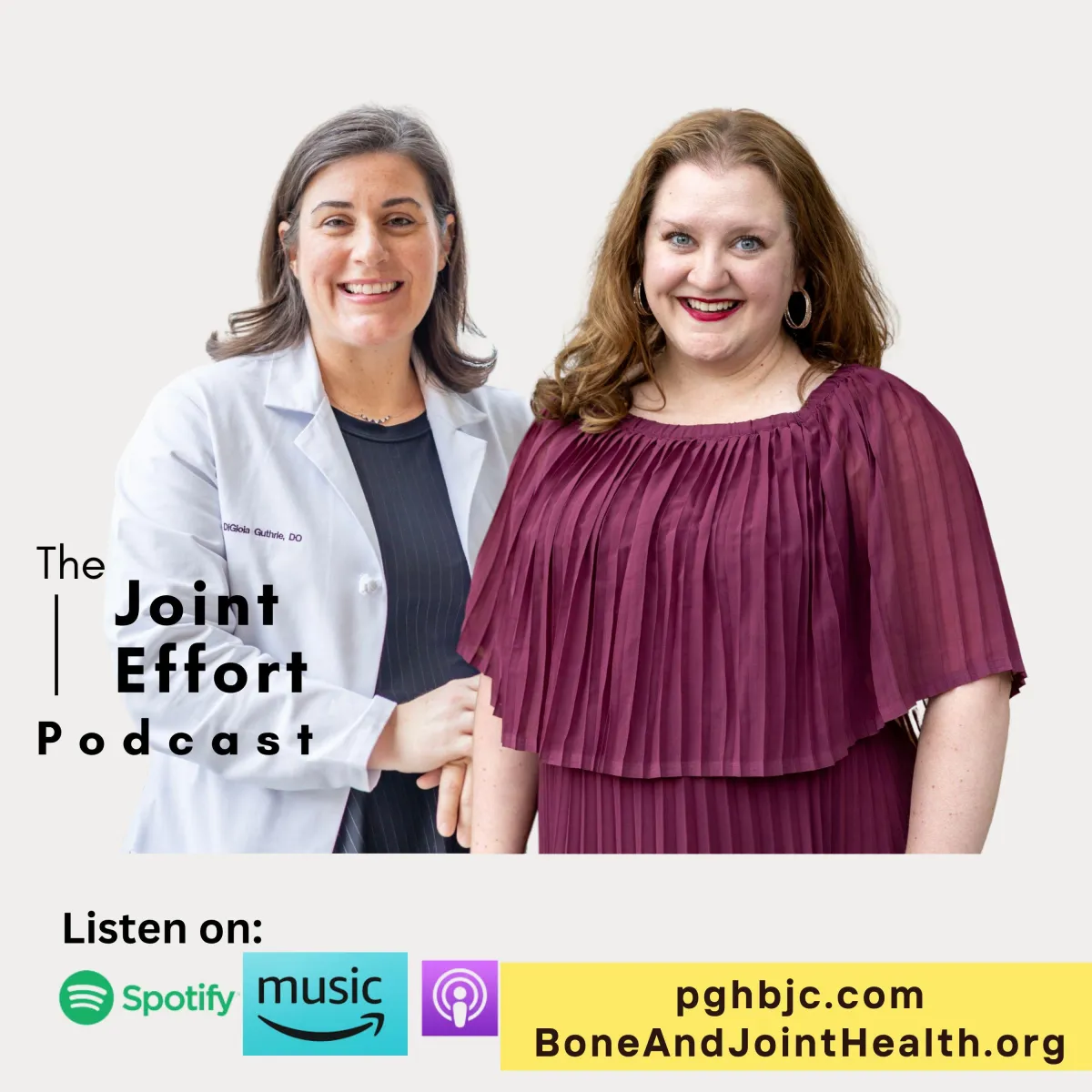

Meet The Pennsylvania Team Behind Stronger Joints: Dr. Noelle DiGioia Guthrie and Physician Assistant, Tiffany Belculfine
Building Stronger Movement Through Partnership
The heart of great musculoskeletal care isn’t one procedure or a trendy exercise plan—it’s a partnership that begins before pain takes over daily life. Dr. Noelle DiGioia Guthrie and Physician Assistant Tiffany Belculfine believe that bone and joint health deserves the same attention people give to cardiac health. Together, they bring two perspectives to the table: Dr. Guthrie offers operative expertise in hip and knee joint replacement, while Belculfine leads with a prevention-first lens that meets patients where they are.
Their shared goal is to empower busy adults across western Pennsylvania with clear information and timely options. As they explain, conditions like arthritis and osteoporosis are common, progressive, and highly responsive to early action. When patients understand their choices, they move better, sooner—and avoid unnecessary suffering.
Coordinated Care That Meets Patients Where They Are
Understanding the roles of each provider helps patients navigate care with clarity. Dr. Guthrie focuses on interventional options such as joint replacement and targeted injections when pain and function reach a tipping point. Belculfine, working through the wellness center, supports lifestyle changes, education, and community outreach that help people build strength, reduce stiffness, and protect bone density long before surgery is needed.
These paths aren’t opposites—they’re coordinated phases of care that keep the individual’s goals at the center. Together, they help someone with creaky knees or stubborn hip pain move from confusion to a clear plan that fits their stage of disease and daily realities. Their approach ensures that patients receive care that is both proactive and responsive, tailored to their unique needs and life circumstances.
Prevention, they emphasize, is practical—not abstract. Early evaluation can reveal muscle imbalances, movement patterns that overload joints, vitamin D deficiency, or gaps in low-impact exercise that accelerate wear. Small, consistent upgrades—progressive strength training, daily mobility work, smart footwear, and targeted weight management—can reduce joint stress and slow the slide toward chronic pain.
Education around osteoporosis risk, especially for postmenopausal women, adds another layer of protection. Screening, adequate calcium and vitamin D, and supervised resistance training support bone remodeling. The payoff is tangible: fewer flares, steadier balance, and more confidence doing everyday tasks like climbing stairs, gardening, or carrying groceries.
Community Connection and Real-Life Movement Goals
Dr. Guthrie and Belculfine know that community access shapes outcomes. Social media helps busy parents, shift workers, and rural patients learn what to watch for and when to seek care. Word of mouth remains powerful—when neighbors walk easier after a joint replacement or a focused PT program, others take notice. That transparency also helps demystify surgery. Too often, people wait until walking is agony, thinking it’s all or nothing. By explaining the full spectrum—from activity tweaks and bracing to injections and, eventually, joint replacement—they reduce fear and encourage timely decisions that match personal goals, not myths.
Life beyond the clinic keeps both clinicians grounded. Parenting, sports, and creative outlets remind them that movement matters because it connects people to family, play, and purpose. That perspective shapes their advice. Training plans must fit real schedules, and adherence improves when people enjoy what they do. A brisk walk with a friend, a community theater rehearsal, or a weekend tennis match can anchor a sustainable routine far better than a perfect but joyless plan.
Their shared aim is to help people keep doing what they love, with less pain and more control, for as long as possible. Whether someone is managing early signs of arthritis or preparing for a surgical solution, the focus remains on preserving quality of life through movement.
Preparation, Recovery, and Long-Term Support
When surgery becomes the right next step, preparation still matters. Prehab—strengthening, range of motion, and conditioning—improves recovery. Honest conversations set realistic expectations about timelines and milestones. After surgery, coordinated follow-up, gradual loading, and ongoing education protect the new joint and restore confidence.
Whether a patient chooses non-surgical strategies today or a joint replacement later, the throughline is the same: informed choices, early action, and care that adapts as needs change. Strong bones and steady joints are built by daily decisions, backed by a team that listens.
Dr. Guthrie and Belculfine continue to advocate for a model of care that blends surgical precision with whole-person wellness. Their message is clear: musculoskeletal health is not just about fixing what’s broken—it’s about building strength, confidence, and resilience from the ground up.
To learn more about The Bone and Joint Center at Magee-Womens Hospital visit:
Dr. Noelle DiGioia Guthrie
300 Halket St.
Pittsburgh, PA, 15213
412-683-7272
To learn more about The Wellness Center for Bone and Joint Health visit:
https://www.boneandjointhealth.org
Tiffany Belculfine
300 Halket St., Suite 1601
Pittsburgh, PA, 15213
412-641-8594
about
Leila Carter
Executive Producer, Good Neighbor Podcast: Pittsburgh
Contact
(412) 561-9956
Menu
Copyright © 2024. All rights reserved by Good Neighbor Partners, LLC | Terms and Conditions | Privacy Policy


